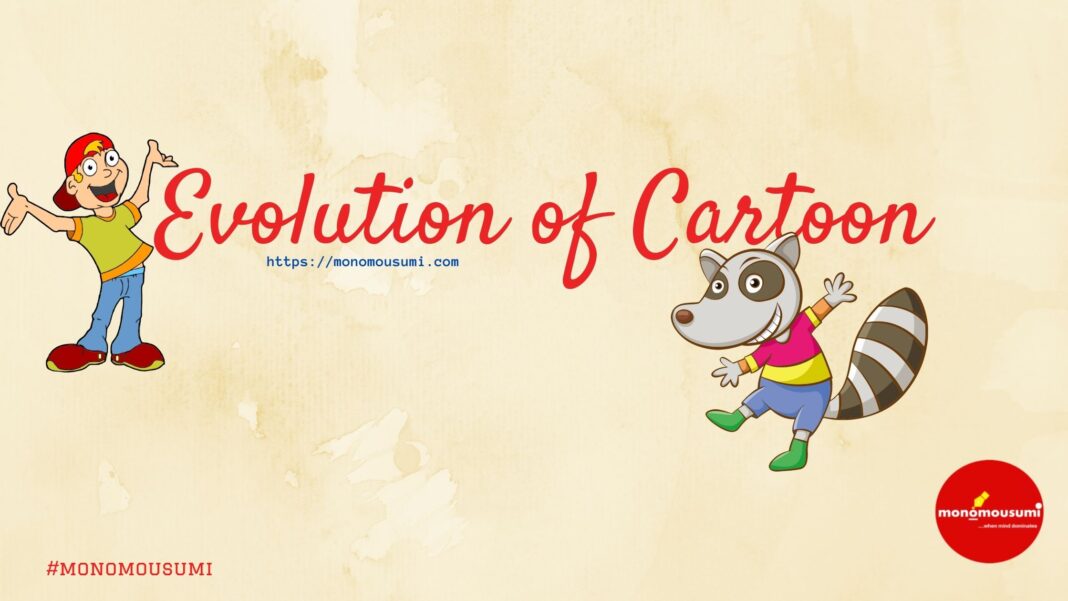Humorous illustrations of different characters in an excessively exaggerated, sometimes satirical manner can be considered as a simple definition of a cartoon. A complete necessity for children, without which, some have the gall to say, their purpose in life is vanquished. Although, this is, to an educated mind, obviously a hyperbole.
To young minds, cartoons are the greatest invention of humankind. Of course, what do these untarnished souls know about the exceptional discoveries of the wheel, the printing press or electricity? To them, cartoons are one of their salient sources of entertainment that lead them to worlds beyond their comprehension or imagination. As Jack from the ‘Nightmare before Christmas’ said, “Just because I cannot see it, doesn’t mean I cannot believe it.”
French caricature artist Emile Cohl created what is considered to be the world’s first animated cartoon, ‘Fantasmagorie’ in 1908. ‘Fantasmagorie’ is a French term and can be defined as a constantly shifting complex succession of things that are seen or imagined. It depicts a stick man moving around and interacting with a few objects in a comical manner. Highly entertaining to all age groups, it went on to become a huge success. As it were, out of the blue, another genre was introduced in the theatres, Animation. From Scooby Doo and Popeye to Peppa the Pig and Spongebob Squarepants, these hilarious cartoons continue to make even, and especially today, children’s life all over the planet that much more colourful and enjoyable. Not one kid can say that they haven’t had the pleasure of seeing the humorous antics of the most infamous duo in cartoon history, Tom and Jerry. And of course everyone has seen the delightful, perhaps the most legendary cartoon character of all time, created by Walt Disney, Mickey Mouse. In India, leaving no room for argument, the most celebrated cartoon is Chhota Bheem, revolving around the life of a brave and really strong boy, Bheem whom many children aspire to be.
Unfortunately, as time has flown by, people have tended to lean more and more towards the stereotype that a child is the quintessential viewer of cartoons and such. This belief has grown in an almost exponential way. So much so that if an adult is ‘caught’ watching a cartoon, they are made fun of and humiliated. However, this is actually not the case. As science has proven, laughing triggers release of feel-good hormones, endorphins in the body, which consecutively provides an overall sense of well-being. It is also said by many in the scientific community that endorphins can temporarily relieve someone from pain even. Thus, people of all ages, however mature they may be, need laughter in their lives and that criteria can be fully met by watching cartoons. As the beloved Snow White once said, “You are never too old to be young.”
Also, cartoons, to the immense delight of those viewers who might have some problems staring at a digital screen with the naked eye for a long period of time, can not only be seen but also read in particular columns of almost all newspapers and magazines published worldwide. A prominent example is Garfield which holds the Guinness World Record for being the world’s most widely syndicated comic strip. It appears in, to state just one example, one of the most distinguished newspapers of India, The Telegraph, on a weekly basis. Another popular comic strip is Denice the Menace whose title, in itself, is pretty self-explanatory. It is about an importuning but loving five year old boy who has a serious penchant for mischief and is always getting in trouble due to his habit of constantly telling the truth, however hurtful it may be.
Cartoons actually originated way back in the Middle Ages. They have come a long way since then in terms of diversity and expanding the horizons of humour. There has been the evolution of political cartoons that critique political events in such a satirical manner, laced with humour, that the criticized cannot get bitter reading it at all.
On a concluding note, cartoons are very influential on young children’s minds and they live upto their expectations in an exemplary manner. The medium of humour makes the young generation more receptive to morals and values. They learn more willingly, as they lose themselves in their own perfect worlds, not knowing that they are shaping up to be bright individuals. Thus, cartoons can be called one of the greatest inventions of all time which has impacted life on a earth to a humongous extent.
By Astha Agarwal, Kolkata










